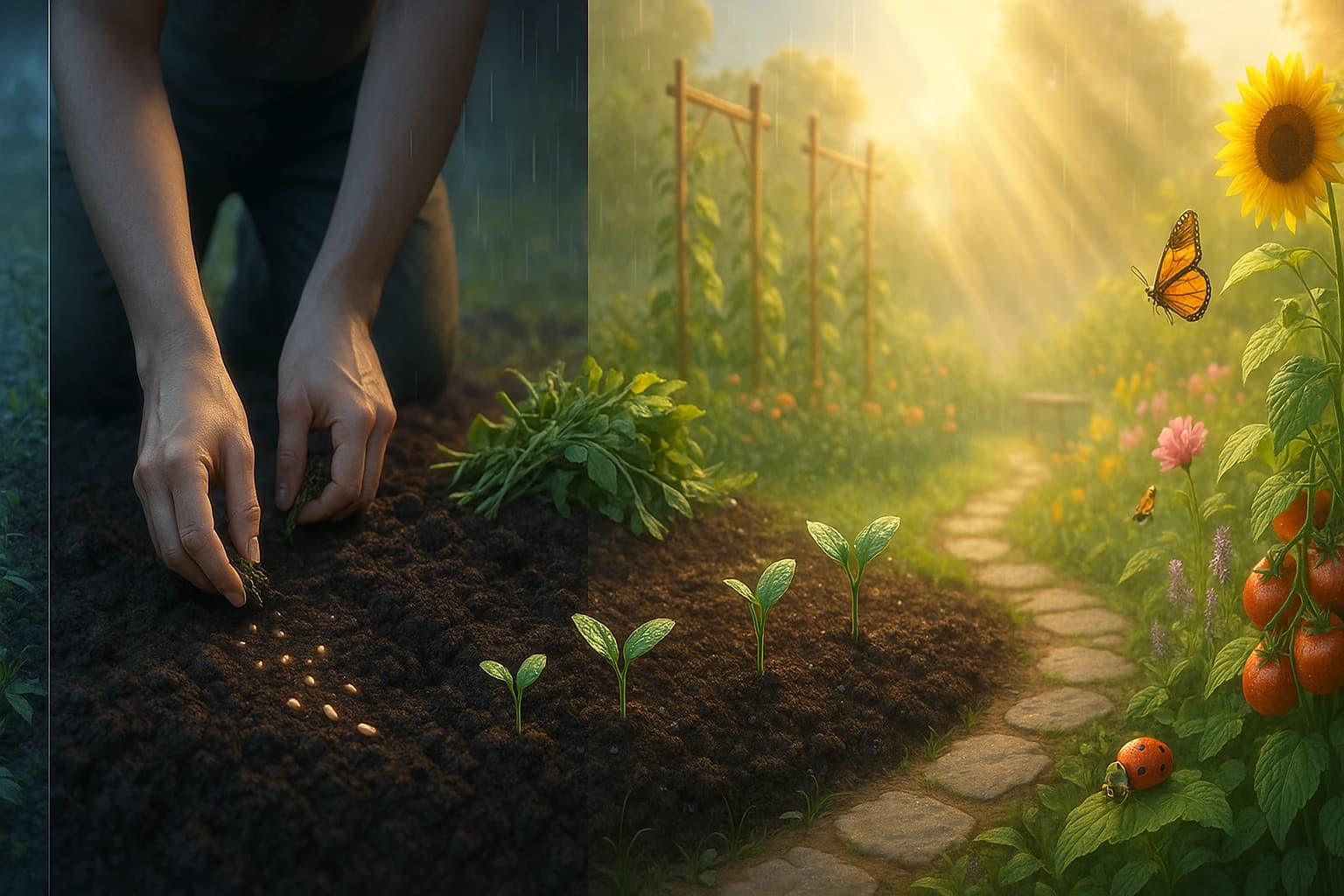Cultivating Joy: Plant Dreams, Pull Life's Weeds

Plant dreams, pull weeds, and grow a happy life. — Anonymous
A Garden as Life’s Blueprint
To begin, the line distills a gardener's routine into a life philosophy: plant, weed, grow. Dreams are seeds—clear intentions placed where they can take root. Weeds are the unhelpful patterns that choke light and water. And happiness is a harvest, not a purchase, arriving after steady, seasonal work. This framing is practical rather than sentimental; it invites us to translate hope into habits and to treat obstacles as routine maintenance instead of moral failures. Because the sequence is cyclical, we return to planting whenever a bed is cleared, allowing renewal to do its quiet work. With that in mind, the first move is sowing deliberately, so what you want has a chance to sprout where you actually live.
Sowing Aspirations with Intention
From there, plant aspirations as specific, observable actions. Gabriele Oettingen’s WOOP (2014) shows that pairing a wish with obstacles and a plan makes follow-through far more likely. One artist I met keeps a jar labeled “seed packet”; each week she writes a tiny, vivid step—“sketch for 15 minutes at lunch”—and drops it in. At week’s end she composts the slips she completed, a tactile reminder that small efforts enrich future soil. By making seeds small and placing them in the right bed (time, location, energy), you protect fragile beginnings from impatience. Soon the outline of a garden appears, and the ground is ready for the less glamorous task that follows: pulling what doesn’t belong.
Pulling Weeds: Thoughts and Habits
However, every plot grows weeds. In cognition, Aaron Beck’s cognitive behavioral therapy (1960s) names distortions like catastrophizing and mind-reading; labeling them is like tagging invaders before removal. In behavior, habits follow a cue–routine–reward loop (Duhigg, The Power of Habit, 2012). If doomscrolling blooms after dinner, keep the phone in another room and replace the routine with a 10-minute walk, preserving the reward of relief while changing the plant. Crucially, weeding is ongoing; a quick weekly pass prevents root systems from hardening. As the beds clear, sunlight reaches the seedlings you actually chose, which invites the next stage: consistent care that turns sprouts into sturdy stems.
Nurturing Growth Through Daily Rhythms
Now nurture growth with light, water, and rhythm. In psychology, Barbara Fredrickson’s broaden-and-build theory (2001) finds that brief positive emotions expand attention and strengthen resilience, much like morning sun coaxes leaves open. Practices such as a two-minute gratitude note, a shared meal, or a bedtime wind-down are low-effort “irrigation lines.” James Clear’s Atomic Habits (2018) suggests attaching them to existing cues—water after coffee, stretch when the kettle boils—so care becomes automatic. Because consistency outperforms intensity, imperfect daily tending beats heroic but rare bursts. With strong roots established, the garden can do what it does best: grow toward others and the wider ecosystem.
Fertile Soil Is Social
Moreover, healthy soil is social. The Harvard Study of Adult Development (since 1938; see Waldinger’s 2015 TED talk) shows that warm relationships predict health and happiness more than wealth or fame. Community gardens illustrate the principle: a vacant lot becomes tomatoes, stories, and shared tools, and loneliness recedes alongside crabgrass. Invite reciprocity—trade skills, swap seedlings, volunteer—so your plot enriches the commons that, in turn, protects your growth. As connections thicken, you gain windbreaks against life’s weather, which leads naturally to the final lesson: seasons still come, and patience matters.
Seasons, Setbacks, and Patient Harvests
Finally, every garden knows setbacks: heatwaves, frosts, pests. Voltaire’s Candide (1759) concludes, “we must cultivate our garden,” not to deny chaos but to answer it with local, persistent care. Carol Dweck’s growth mindset research (2006) reframes failures as data for the next planting—move the bed, amend the soil, try another variety. Even losses can be composted into nutrients when we ask, What can this teach? With steady cycles of planting, weeding, and tending, happiness becomes less a mood and more a landscape you steward.